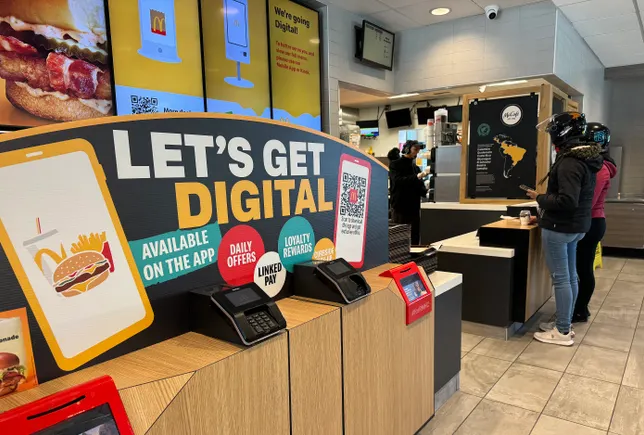AI’s Role in Marketing and Research:
You recommend AI for brainstorming and trend analysis. Can you provide specific examples of how your agency uses AI for these tasks?
When our team brainstorms, it’s common for someone to pull up ChatGPT, much like we might have reached for a thesaurus in the past. We’ve gone a step further by creating custom GPTs with OpenAI, tailored specifically to our unique approach to trend analysis. For instance, we developed several personas as GPTs, allowing us to quickly bounce ideas off an AI-driven representation of our target audience. This approach effectively combines early-stage ideation and focus group insights into a single interaction. Additionally, we’ve created an AI-powered tool designed specifically to identify white space opportunities within particular industries or verticals. These custom GPTs are carefully built by codifying our team’s unique thought processes and analytical approaches, embedding our “special sauce” directly into the tools themselves. Importantly, we’re not merely pulling information from AI; we’re using it strategically to optimize and enhance our existing data and insights.
You’ve noted that AI is best at questions “someone has answered.” How does your agency determine when to rely on AI versus human expertise for generating insights?
The reliability of AI output is directly tied to the quality and specificity of its training data. At Public Label, we’ve developed specialized AI tools built on top of frontier models, enriched by over 16 years of proprietary agency data. We never simply deploy AI “out of the box.” Instead, our approach involves carefully training AI with data tailored to each specific use case, ensuring contextually relevant insights.
The decision isn’t about choosing AI over human expertise; rather, it’s about strategically integrating AI with human judgment. Our goal isn’t to rely solely on AI-generated outcomes. Instead, our agency’s role is to leverage what AI makes possible, infusing it with our human insights, creativity, and proprietary data. It’s in this intersection of human expertise and AI-driven insights that true innovation and optimization happen.
What are the limitations you’ve observed in AI’s ability to generate truly novel or differentiated insights?
The primary limitation I’ve observed in AI’s ability to generate truly novel or differentiated insights ties directly back to the quality and nuance of the data provided. AI doesn’t independently create entirely original concepts; final ideas rarely emerge fully formed directly from AI outputs. Previously, limitations existed even without AI—when creative directors or strategists worked alone, constrained by their own perspectives. Now, each individual has a “cybernetic teammate,” as recently described by Ethan Mollick in a Harvard study. At Public Label, we’ve experienced firsthand how having this additional perspective—this AI teammate—to bounce ideas off has significantly improved our creativity and productivity. It has been especially valuable given that our teams are entirely remote, removing the ability to casually discuss ideas in person. Rather than seeing AI as limited, we’ve found it has lifted previous constraints, expanding possibilities and upleveling our collaborative processes.
How do you see AI evolving in its ability to “relate things in new ways” and contribute to creative problem-solving?
Working with AI allows us to explore problems from multiple angles and perspectives, effectively stepping into someone else’s shoes. I envision AI evolving into an even stronger tool for helping people escape their echo chambers and avoid “breathing their own exhaust.” One of AI’s greatest potential contributions to creative problem-solving is its ability to critically challenge our assumptions. Some of my most valuable prompts include: “Tell me what’s wrong with this,” “Persuade me that this is incorrect,” or “Punch holes in this plan.” Leveraging AI to proactively highlight blind spots and question seemingly flawless plans creates significant opportunities for deeper, more innovative problem-solving. Ultimately, AI’s evolving ability to help us think differently—and more objectively—will unlock creativity by pushing us beyond our inherent biases.
Data Science and Practical Applications:
How does your agency ensure the quality and reliability of data used to train AI models for marketing and research purposes?
We invest significant human effort into structuring, cleaning, and preparing our data. While this process is intensive, it represents an early investment that yields continuous returns as we further develop, refine, and maintain our AI tools. Ensuring data quality from the outset is foundational whenever we build a new tool or model. Additionally, when we integrate third-party data, we collaborate closely with trusted vendors and partners. We’re meticulous and conscientious about data sourcing, always prioritizing transparency, accuracy, and ethical acquisition practices.
What are the key ethical considerations when using AI in data analysis and consumer insights?
Key ethical considerations include data privacy, transparency, bias, and accountability. Ensuring consumer data is collected and used ethically, with full transparency and consent, is foundational. We also remain vigilant about potential biases inherent in AI models, working to mitigate these through careful oversight and diverse datasets.
How do you balance the efficiency gains of AI with the need for human intuition and critical thinking in research?
Right now, our goal isn’t necessarily to move faster; instead, we’re focused on reimagining what’s possible. AI has unlocked significant amounts of newfound time, allowing our team to invest deeply in innovation, exploring new solutions and possibilities. The efficiency provided by AI becomes a springboard for richer human intuition, creativity, and critical thinking—not a replacement for them.
What are the biggest challenges in integrating AI into existing marketing and research workflows?
The biggest challenge in integrating AI into existing marketing and research workflows is that AI often reveals that our traditional ways of working may no longer be valid or even necessary. Embracing AI means fundamentally rethinking our processes and workflows…this shift can be significant, this is where Change Management will play a big role and already has at our agency.
Future Trends and Perspectives:
How do you see the role of data scientists evolving in the age of increasingly sophisticated AI?
I think Data scientists will remain vital, but their roles will evolve significantly as AI becomes increasingly sophisticated. These professionals have already been deeply engaged with AI tools longer than most marketing professionals, so they’re naturally positioned for this shift. However, their focus will move from day-to-day data analysis toward innovation and the strategic use of data.
What are the most promising AI technologies for marketing and research your agency is currently exploring?
I’m particularly excited about AI voice technology. I think voice-driven interactions will emerge as one of the most compelling and promising areas of AI innovation. We’ll increasingly engage with computers through conversation, speaking and listening rather than typing and reading—and marketing strategies in 2026 and onward will undoubtedly reflect this shift.
How do you advise clients on adopting AI tools while maintaining a human-centered approach to marketing?
A: Some of our clients are eager to adopt AI because they recognize its potential to drive efficiency and innovation. Others remain cautious or uncertain. We approach each client individually, understanding their comfort level and readiness for AI integration. It’s our responsibility at Public Label to educate clients, clearly demonstrating how AI tools can enhance their marketing capabilities while consistently maintaining a human-centered approach. Regardless of the technological innovations we implement, we always prioritize authentic, human-focused connections.
What advice would you give to marketing professionals who are just beginning to explore the potential of AI in their work?
Don’t be intimidated by AI, and don’t get caught up in the hype—just start experimenting. I recommend first exploring AI tools through personal use cases, as this often sparks that “aha” moment, making the potential benefits clear and relatable. It’s easier than many initially realize. Ultimately, embracing AI will empower you professionally, increasing your value and effectiveness. You’ll become more capable and versatile when you know how to effectively collaborate with and leverage AI tools than you would be without these skills.








Leave a Reply